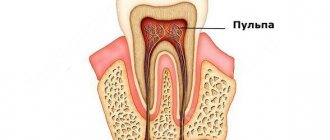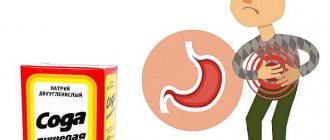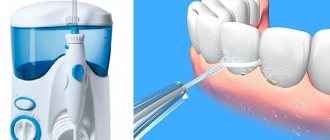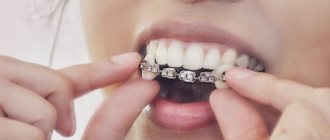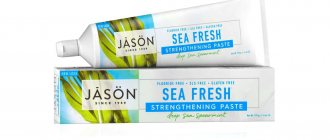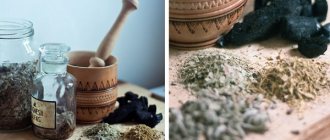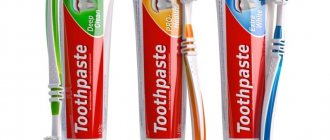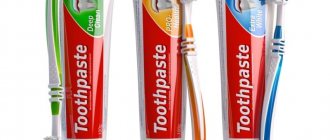To keep your teeth healthy and beautiful, you must follow the rules of hygiene. You should be extremely careful when choosing toothpaste.
Unfortunately, you cannot be sure that the entire list of beneficial additives indicated in the composition is actually present in the paste. But you can make healthy pasta yourself from available products. Let's take a closer look at how to make healthy toothpaste at home.
The main advantages of natural pastes
Each purchased paste is made using chemical components. Such substances can damage tooth enamel and cause irritation of the mucous membrane.
During hygiene procedures, a small amount of paste enters the esophagus. With regular exposure, the chemical components of the product can cause disturbances in the functioning of the digestive system.
The following components pose a health hazard:
- lauryl sulfate;
- parabens;
- triclosan.
Fluoride is an essential element in toothpastes with a whitening effect. Despite its widespread use, this component is also not entirely beneficial for the human body. Homemade pastes will protect you from the negative effects of such chemical components. In addition, home remedies do not cause irritation and their effects are milder.
It's worth noting that most store-bought toothpastes are not recommended for everyday use, especially those that have whitening properties. This warning does not apply to hygiene products made independently from natural ingredients.
The natural hygiene product is absolutely safe if you follow the recommendations on how to properly make toothpaste with your own hands, you can also use the instructions with photos.
The homemade paste contains essential oil, which effectively strengthens tooth enamel and also promotes gum healing. Such oils are powerful antiseptics that are gentle on tissues.
The benefits of natural ingredients
On store shelves there are tubes with cleansing compositions from well-known manufacturers for every taste and budget. Why do some people prefer homemade oral hygiene products? Are they doing the right thing?
Dentists and herbalists are sure: it makes sense to spend half an hour creating toothpaste from natural ingredients. If the proportions are strictly observed and used correctly, the home remedy will cope with the care of teeth and gums no worse than ready-made analogues.
Advantages:
- absence of artificial dyes, preservatives, synthetic fragrances, harmful surfactants (in cheap pastes), aggressive chemicals;
- active effect on dental tissue, strengthening enamel;
- delicate cleansing, active dissolution of plaque, slight lightening of the top layer;
- pleasant freshness of breath after using natural paste: mandatory components – mint essential oil, lemon juice;
- good disinfecting properties: after hygiene procedures with homemade paste, the number of bacteria is noticeably reduced: the use of valuable esters and aloe vera gel has a positive effect on the microflora of the oral cavity;
- soft abrasives polish the enamel without damaging the top layer;
- instead of synthetic components that form foam, natural soap made from natural ingredients is used;
- the cost of homemade formulations is affordable for anyone who pays attention to the health of their teeth and gums. The components are easy to find in a pharmacy, herbal products or natural cosmetics store (natural handmade soap).
Natural soap protects homemade paste from drying out, glycerin gives a uniform consistency and precipitates hard substances. Add ethers and pharmaceutical substances only in the specified quantities.
Why does it appear and how to get rid of a yellow coating on a child’s tongue?
We have the answer! Read about the symptoms and treatment of oral leukoplakia at this address.
Selecting the ingredients correctly
In folk medicine, there are many options for preparing homemade mixtures for cleaning teeth. To choose the right prescription for you, assess the condition of your oral cavity and identify problems that need to be eliminated. After that, choose what you need to make toothpaste.
Pastes containing cloves have an analgesic effect. This plant not only treats toothache, but also prevents its recurrence. Therefore, it is appropriate to use cloves also as a prophylactic agent. To normalize blood circulation in the gums, it is recommended to add rosemary extract.
Note!
Toothpicks - benefits, harm and tips for choosing safe toothpicks from the best materialsTartar cleaning - effective technologies and methods of professional cleaning. Indications and contraindications for tartar removal
Sour taste in the mouth - causes and symptoms of what disease can a sour taste in the mouth be?
Thyme can help eliminate harmful bacteria. Fresh mint leaves stop inflammatory processes and give freshness to your breath. Tea tree has many beneficial properties. It is effective in the treatment of caries, and also combats increased sensitivity of the gums.
Useful tips
Are you interested in cleaning compositions that are easy to prepare at home? Have you decided to make your own pasta? Pay attention to the recommendations of dentists and people who successfully use natural products for hygiene measures.
Creating the perfect toothpaste: 10 important rules:
- use only fresh natural ingredients purchased at a pharmacy or supermarket;
- carefully measure the amount (volume) of each substance: a skew in one direction or another will change the properties of the cleansing product. To prepare some formulations, you will need a scale on which you can measure 1–2 g of certain ingredients;
- Use foaming compounds only from natural ingredients. Handmade soap is sold in specialized stores;
- do not exceed the number of drops of essential oils: a high concentration of active esters causes irritation of the gums;
- For the first time, prepare a minimum portion of homemade cleansing composition. Test the action and observe the reaction of the oral tissues. Try several recipes, see which composition is more effective;
- never prepare a large volume of a natural product: during storage, the properties of the product deteriorate, essential oils evaporate;
- read the recipe carefully, pay attention to the shelf life of the finished product: some cleaning compositions are stored for no more than five hours, others are approved for use for 2-3 weeks;
- Place the prepared mass in a clean glass jar of cream or other cosmetic product. Store natural paste in a cool place, avoid hot rooms;
- Use the natural remedy twice a day as you would a regular toothpaste. Do not rub your teeth too hard: if you have baking soda, you risk scratching the enamel;
- If your gums become irritated or burning, stop using the homemade cleansing product. Analyze what caused the problem: perhaps you violated the proportions or brushed your teeth and gums too actively with a hard brush.
Paste for sensitive teeth
A paste recipe based on white clay and honey is recommended for those with sensitive teeth and gums. This product will carefully remove plaque and tartar and give freshness to your breath. In addition, the paste effectively whitens tooth enamel. Let's look at the instructions on how to make toothpaste.
To prepare the product, take white cosmetic clay (80 g), honey (15 g), two drops each of chamomile and sage essential oil.
Initially, make a mixture of viscous consistency from clay and water, into which add honey and oils alternately. Mix the ingredients until smooth.
Causes of tooth enamel destruction
Healthy teeth have strong enamel and healthy gums. But negative external and internal factors can lead to gum inflammation and enamel destruction. To avoid this, you need to take comprehensive measures, which include: oral care, getting rid of bad habits, replenishing the body with essential minerals and vitamins, as well as regular visits to the dentist for preventive examination and dental treatment (which includes professional teeth cleaning and whitening teeth).
Teeth deteriorate for the following reasons:
— Incorrect and irregular oral care.
— Diseases of the teeth and gums (caries, periodontal disease, etc.).
— Brushing your teeth with coarse abrasives (they severely scratch the enamel and can lead to the development of caries in the future).
— All types of whitening (healthy enamel has a yellowish tint).
— Sudden changes in temperature (eating hot and cold foods).
— Eating foods high in sugar and acids.
- Smoking.
— Incorrect bite (enamel wears off).
— Age (with age, the enamel becomes thinner and wears off, degenerative changes occur in the gums).
— Hormonal disorders (pregnancy, lactation).
— Lack of vitamins and minerals in the body.
Photo instructions on how to make toothpaste
Help the project, share your review
Join the discussion of the article:
Site search
Recommendations
Unusual crafts for children - ideas, tips, photo examples
Sangviritrin - instructions for use of the solution and indications for use for dental problems
Mouth spray: the best formulations with prebiotics, their cost and application features
Falimint - reviews, instructions for use and expert assessment of effectiveness
Stomatofit - complete instructions for use, dosage, selection of analogues and price comparison
Ketorol for toothache - reviews of use and effectiveness. Cost and dentists’ opinions about the medicine
Antibiotics for flux: the most effective remedies and tips on choosing medications for children and adults
Metrogil denta - analogues, advantages of use, composition features and indications for use
Bathroom vanity unit – choose the best option. Photo of design, combination, sizes, color
Periodontocide - means for prevention, release form, methods of application and indications for use
Medicine for teeth - rating of the best remedies for eliminating pain and relieving swelling. Doctors' advice and cost of the most effective drugs
Medicine for gums - the most effective gels, ointments and tablets for relieving pain and discomfort
Curtains made of beads - what is their feature? Photo of beautiful design + installation instructions
Blue for stomatitis - methods and features of using the medicine for children and adults
Cholisal is a dental gel for gums and oral cavity. Price and instructions for use
Kamistad gel - instructions for use, features of use, composition, indications and contraindications
Lincomycin - instructions for use, cost, reviews from patients and doctors
Ointment for gums - the choice of the most effective healing and anti-inflammatory agents
Ibuprofen - clinical practice, instructions for use and safety tips
Pain after wisdom tooth removal - possible complications and duration of pain after removal
Sections
Most read on the site:
A tooth hurts at night The sky in the mouth hurts Vitamins for teeth Inflammation of the gums Inflammation of the tooth Gel for gums Herpes in the mouth Dental hygiene Gorpils Dekasan Dental floss Tartar Plaque Ibuprofen Irrigator How to choose a mouthwash How to brush your teeth Kamistad gel Bleeding gums Medicine for gums Medicine for teeth Cavity treatment mouth Lincomcin ointment for gum metrogil denta nystatin swollen upper lip whitening paste gums gums periodontocide Prevention Pomic in the mouth Solution to the oral cavity of Sinki sinky from stomatitis spray spray stomatophytite dentistry in the gums, ultrasound halitosis Hepilor Holisal Crunches the jaw Itchy teeth Cleaning gums Splinting teeth Mouth ulcers
Copyright © 2022 ZubkiExpert.Ru is a leading online portal about dentistry. Modern methods of diagnostics and dental treatment! Home | Sitemap | Dentist consultation
Why you should avoid industrial compounds
Most often, industrial oral care products contain many ingredients that are hazardous to human health. Among them:
- Glycerol. It envelops each tooth, thereby preventing the enamel from repairing itself.
- Sodium lauryl sulfate. This chemical compound, which causes the formation of foam, provokes irritant skin reactions and adversely affects all organs.
- Triclosan. There is information about its connection with disorders of the nervous system, as well as with the development of cancer.
- Fluorine. This component tends to accumulate in the human body and is toxic in large quantities. Therefore, you should not take responsibility when choosing a fluoride-containing cleaning product when purchasing; if necessary, it should be prescribed exclusively by your dentist. In addition, many food products already contain sufficient amounts of this substance.
Then you ask, what to replace toothpaste with? Nothing. Just try to make a natural one yourself. And just a month after using it, your smile will acquire a unique whiteness and shine.
Cooking recipes
There are many different recipes for making homemade toothpaste, which allows you to choose the one that suits you best. Experiment until you find the best option. Below are common recipes for making homemade toothpastes.
Recipe No.1. With bentonite clay
Step 1. To prepare this unusual pasta, you need to prepare everything you need. First of all, you need bentonite clay, which is used in dental practice to remineralize the dentition. You will need 15 drops of peppermint, 2 tbsp. l. pure water, 5 g crushed sea salt, 1 tsp. stevia, as well as bentonite itself - 3-4 tbsp. l. All ingredients can be easily purchased at any pharmacy.
Preparing everything you need
Step 2. In addition to the ingredients, you also need to take care of the containers. It is advisable to use a plastic bowl, since metal contact with clay can cause unpleasant consequences. Use a metal fork to mix.
Preparing the bowl, jar and fork
Step 3. All collected ingredients must be mixed in one bowl. When mixing, you need to follow a certain sequence: first add the dry ingredients, and then start adding the liquid ones one by one.
Mixing ingredients
Step 4: Use a small glass jar to store the prepared toothpaste. When brushing your teeth, simply dip the brush into the jar. Or take a teaspoon and then apply a little paste to your toothbrush. Instead of a jar, you can also use a plastic container.
The finished toothpaste will be stored in a small jar.
Recipe No2. With glycerin
Unlike the previous recipe, this one is more complex, since the preparation of toothpaste requires heat treatment. During the heating process, the liquid must be stirred constantly. Otherwise, the paste may be damaged due to overheating.
Glycerol
The following ingredients are needed:
- essential oil (no more than 5 drops). You can use mint, lemon or clove oil - it all depends on your preference;
- filtered water (7 tbsp.);
- guar gum (4 tsp);
- baking soda (3 tbsp.);
- glycerin (1.5 tsp). If desired, you can use vegetable glycerin. You can find it in any of the pharmacies in your city. In addition, vegetable glycerin is more harmless to teeth.
Having prepared everything you need, you can start preparing the pasta. To do this, mix all the ingredients (except for essential oils) in an enamel bowl and place on low heat. Stir the mixture constantly until it becomes a paste. Then add essential oils. After mixing thoroughly, pour the finished product into a glass jar and close it tightly with a lid.
How to make toothpaste with glycerin
You can experiment a little with the ingredients and create a unique paste that will best deal with plaque. For example, some people add a little vodka to the paste instead of distilled water. This replacement allows you to increase the shelf life of the finished product. In addition, to enhance the abrasive properties, you can add a little crushed activated carbon, but you will need to adjust the recipe to maintain the desired texture.
Making toothpaste is quite simple. The only problem you may encounter is purchasing certain ingredients. To do this, you can visit a specialized store that sells homemade soap or products for making cosmetics. By spending a little free time, you can improve this recipe by replacing one or another component. The same can be done with other homemade cosmetics recipes.
Example of ready-made toothpaste
Recipe No3. With coconut oil
Thanks to lauric acid, which is contained in coconut oil, toothpaste prepared on its basis has antimicrobial properties. Below are step-by-step cooking instructions.
Table. Instructions for making toothpaste with coconut oil.
| Steps, photo | Description of actions |
Step one | To prepare the paste, prepare a little stevia, mint essential oil (20 drops) and 3 tbsp. l. baking soda and coconut oil. The combination of these ingredients allows you to cleanse your mouth naturally. |
Step two | This recipe has few ingredients, so there is no need to use a large pan. To prepare, you need a deep bowl, a jar for storing the paste, and a spoon or fork for mixing. |
Step three | First of all, mix baking soda and coconut oil. Mix the ingredients until smooth. |
Step four | For maximum similarity to store-bought toothpaste, add the specified amount of stevia and essential oil. Their quantity can be reduced, then the paste will come out a little softer. Mix all ingredients until there are no lumps in the liquid. If necessary, the amount of coconut oil can be increased. |
Step five | Once the consistency is acceptable, place the prepared paste into a dry jar and then close the lid tightly. |
Recipe No4. Preparing a gum massage product
In addition to regular pastes, you can prepare a wonderful remedy for gum massage at home. To do this, mix 1 tsp in one bowl. turmeric, 3 tsp. ground black pepper and 2 tsp. sea salt. Be sure to take fine salt, or rather finely ground. Then add a little ghee to end up with a creamy consistency.
Preparing a gum massage product
Dip your finger into the prepared product, then massage your gums with gentle circular movements. Repeat this procedure daily before bed for a calming effect. This remedy is especially useful for those people who suffer from increased sensitivity of teeth and gums.
Self-massage of gums
What questions do you have about homemade pasta?
- Does baking soda scratch enamel? Baking soda is much less abrasive than the RDA of commercial pastes.
- Are essential oils safe? I have to be completely honest here - essential oils, by their nature, are very dangerous for the kidneys if you drink them. But those 15 drops, calculated for the total volume of the paste, will only bring benefits. After all, the menthol in pastes can cause heart failure... Just be moderate and try not to swallow the mixture.
- How to store homemade toothpaste? Store the mixture in a glass at room temperature, covered.
- Does this paste help get rid of food odors (for example, onion-garlic)? They write that homemade toothpaste is much better in this regard than any store-bought toothpaste. But it is worth remembering that many aromas rise directly from the stomach and also stay in the blood for a long time - this applies to alcohol and onion essential oils.
- Can homemade toothpaste be harmful? Don't think. If you are allergic, be careful with oils.
- Do the ingredients affect the whiteness of teeth? They have a very positive effect! Organic and accurate whitening is guaranteed.
There is only one detail that you will have to pay attention to - do not let the paste dry on the brush, rinse it thoroughly with hot water.
